Are Toxins in Fast Food Compromising Your Health?
By Louise Belle BHSc (Nut Med)
It is common knowledge that fast food contains high amounts of sugar, oxidised fats and trans-fats and sometimes extra additives such as MSG. These things can increase your risk of cardiovascular disease, high blood pressure, type 2 diabetes, and obesity. Even with knowledge of this, millions of people continue to consume fast food on a regular basis. Less known, is that fact that many fast food products also contain added chemical colours and preservatives, that may cause side effects especially allergies or gut irritability. The ingredient lists of our popular fast food chains here in Australia display many undesirable chemicals. Listed below are ten of the key chemicals that you will find in fast-food and how they can impact your health:
- Sodium nitrate (250): Used to preserve and maintain colour in processed meats and bacon. They can convert to nitrites in the gut, which combine with amines (usually coexisting in these products) to produce nitrosamines which are known carcinogens. They cause behavioural issues in children, rashes and sleep disturbance.
- Colour 160b: Annatto is used in cheese to make it yellow and is associated with headaches, poor sleep and arthritis. Avoid cheeses that look too bright yellow to be natural!
- Preservative 282: Calcium propionate, commonly used in breads and wraps is linked to hyperactivity in children, learning difficulties, sleep disturbance and immunosuppression.
- Sulphites (220-228): These preservatives are used in chips and breads and are associated with headaches, runny nose, hives and asthma.
- Preservatives 200 & 202: These sorbates are used to preserve cheese, bread, pickles and mayonnaise and can cause dermatitis, asthma, burning mouth syndrome and IBS.
- Colour 124: The brilliant scarlet colour is used in strawberry syrups and is a known histamine liberator, which can intensify symptoms of asthma, hay fever and rashes and can cause hyperactivity in children.
- Colour 124: The brilliant scarlet colour is used in strawberry syrups and is a known histamine liberator, which can intensify symptoms of asthma, hay fever and rashes and can cause hyperactivity in children.
- Colour 124: The brilliant scarlet colour is used in strawberry syrups and is a known histamine liberator, which can intensify symptoms of asthma, hay fever and rashes and can cause hyperactivity in children.
- Colour 124: The brilliant scarlet colour is used in strawberry syrups and is a known histamine liberator, which can intensify symptoms of asthma, hay fever and rashes and can cause hyperactivity in children.

Next time you go to order your favourite burger, soft drink and fries, think about the negative effects that it could be inflicting on your health. Every time you eat at a fast food restaurant you are further exposing yourself to risk of disease, or adverse health outcomes. Why not humour yourself and ask the staff for their ‘food allergy information book’ and see what chemicals are residing in the food you were about to order.
Not only do we have these chemicals added to our fast food, the packaging used to wrap or hold the food, can transfer additional chemicals onto it. Fluorinated compounds (PFAs) are used to make fast-food wrappers and packaging grease proof. They are also used in carpeting and waterproofing. A recent study in the Journal of Environmental Science & Technology found that 46% of wrappers and 20% of boxes contained fluorine. If the food is hot and contains emulsified fats, the risk of the chemicals leaching into the food is even higher. Studies have linked high exposure to these chemicals with thyroid disorders, immune problems and testicular cancer. It is impossible to distinguish between which fast food packaging contains these compounds and which do not. The best bet is to avoid fast food all together. Instead, choose whole foods that will nourish your body with nutrients.
Laurel Schaider, Ph.D., environmental chemist, Silent Spring Institute, Newton, Mass; Kenneth Spaeth, M.D., M.P.H., chief, occupational and environmental medicine, Northwell Health, Great Neck, N.Y.; Foodservice Packaging Institute, statement, Jan. 31, 2017; Environmental Science & Technology, Feb. 1, 2017
Helpful resource from ConsumerNotice.org
“At ConsumerNotice.org we strive to notify consumers of health and safety risks attributable to environmental factors, among other things.
Per- and polyfluorinated substances, synthetic chemicals linked to cancer, are commonly used in waterproofing and as nonstick coatings. PFAS contamination of water and soil poses serious health risks.
We believe knowledge is power and want to provide as many resources as possible to those who may be affected by water contamination. We’ve published educational guides on our website.”
You can check it out here:
https://www.consumernotice.org/environmental/water-contamination/pfas/
https://www.consumernotice.org/environmental/water-contamination/pfas/products/






